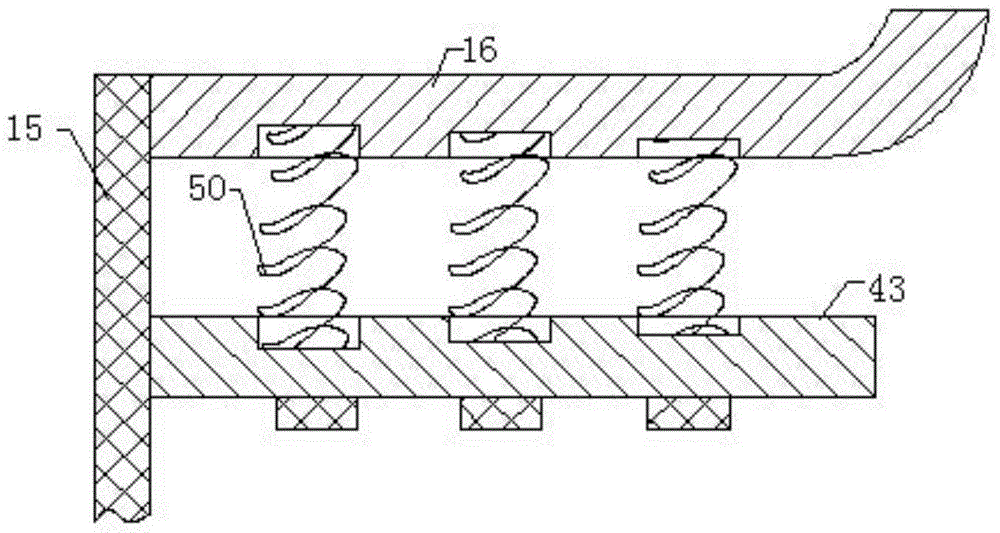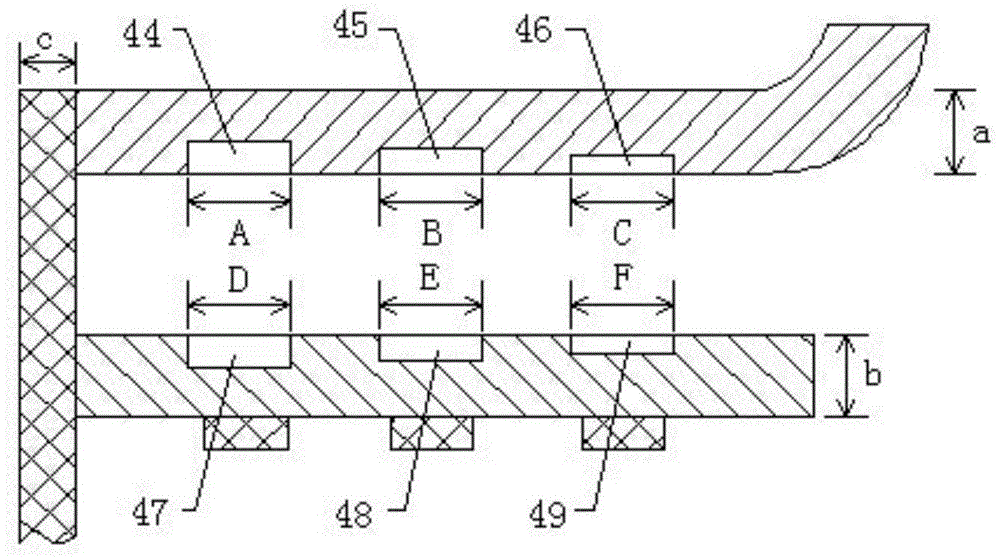textile machine
A textile machine and elastic sheeting technology, which is applied in textiles and papermaking, knitting, weft knitting, etc., can solve the problems of missing stitches, messy wires, and continuous production of broken wires, and achieves the effect of convenient use and simple structure
- Summary
- Abstract
- Description
- Claims
- Application Information
AI Technical Summary
Problems solved by technology
Method used
Image
Examples
Embodiment 1
[0040] textile machines such as Figure 1 to Figure 3 As shown, it includes a textile machine body 1 and a reel 11, the reel 11 is arranged on the side of the textile machine body 1, and the left and right ends of the reel 11 are symmetrically provided with a pair of elastic pressure sheets that can fix the cloth on the surface of the reel 11; The elastic pressing sheet is two pieces, which are named as the first elastic pressing sheet 16 and the second elastic pressing sheet 43 respectively. An elastic pressing piece 16 is arranged on the top of the support column 15, a second elastic pressing piece 43 is arranged on the middle part of the supporting column 15, and a first spring 50 is arranged between the first elastic pressing piece 16 and the second elastic pressing piece 43; An elastic pressing piece 16, an end that is connected with the support column 15 on the second elastic pressing piece 43 is called the pressing piece left end, and the first elastic pressing piece 16...
Embodiment 2
[0043] textile machines such as Figure 4 to Figure 7 As shown, it includes a textile machine body 1 and a reel 11, the reel 11 is arranged on the side of the textile machine body 1, and the left and right ends of the reel 11 are symmetrically provided with a pair of elastic pressure sheets that can fix the cloth on the surface of the reel 11; The elastic pressing sheet is two pieces, which are named as the first elastic pressing sheet 16 and the second elastic pressing sheet 43 respectively. An elastic pressing piece 16 is arranged on the top of the support column 15, a second elastic pressing piece 43 is arranged on the middle part of the supporting column 15, and a first spring 50 is arranged between the first elastic pressing piece 16 and the second elastic pressing piece 43; An elastic pressing piece 16, an end that is connected with the support column 15 on the second elastic pressing piece 43 is called the pressing piece left end, and the first elastic pressing piece 16...
PUM
 Login to View More
Login to View More Abstract
Description
Claims
Application Information
 Login to View More
Login to View More - R&D
- Intellectual Property
- Life Sciences
- Materials
- Tech Scout
- Unparalleled Data Quality
- Higher Quality Content
- 60% Fewer Hallucinations
Browse by: Latest US Patents, China's latest patents, Technical Efficacy Thesaurus, Application Domain, Technology Topic, Popular Technical Reports.
© 2025 PatSnap. All rights reserved.Legal|Privacy policy|Modern Slavery Act Transparency Statement|Sitemap|About US| Contact US: help@patsnap.com



